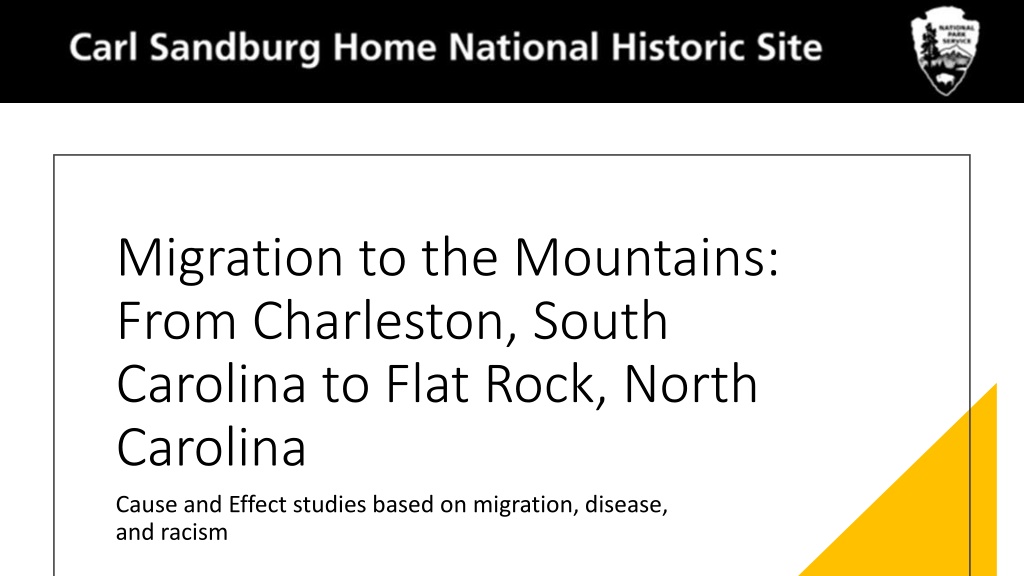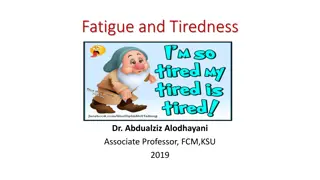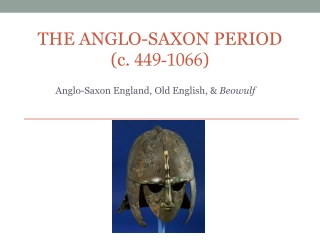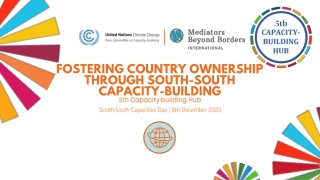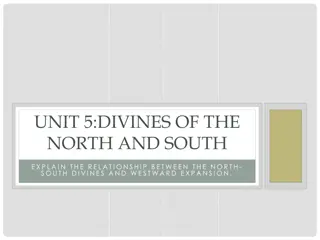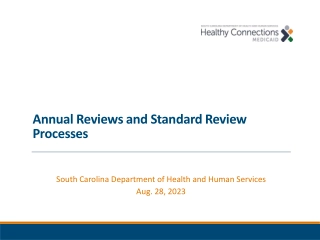Migration from Charleston, South Carolina: Causes and Effects
Explore the migration patterns from Charleston, South Carolina, to Flat Rock, North Carolina, driven by factors like disease, racism, and a desire for better health. Understand the motivations behind temporary relocations and the impact of communal movement on society. Delve into the vocabulary related to this historic migration journey.
Download Presentation
Please find below an Image/Link to download the presentation.
The content on the website is provided AS IS for your information and personal use only. It may not be sold, licensed, or shared on other websites without obtaining consent from the author. Download presentation by click this link. If you encounter any issues during the download, it is possible that the publisher has removed the file from their server.
Presentation Transcript
Migration to the Mountains: From Charleston, South Carolina to Flat Rock, North Carolina Cause and Effect studies based on migration, disease, and racism
Why would you move? In your work sheet list things that might motivate or cause you to move somewhere, even if only temporarily. If you or your family were sick, would you go somewhere to be healthy? If you wanted to be left alone, where would you go? If you wanted to always be near fun things and parties, where would you go? If a lot of people moved to the same place, what effects could that have? What would you want or need to take with you in these different situations?
Vocabulary Miasma - A vaporous exhale or atmosphere formerly believed to cause diseases such as Malaria and Yellow Fever. In the Lowcountry of Charleston South Carolina, wealthy landowners would travel to the mountains to escape the sickly season caused by what they thought was miasma. Miasma was considered more prominent in crowded towns like Charleston. Geography - The study of the physical features of the earth and its atmosphere, and of human activity as it affects and is affected by these, including the distribution of populations and resources, land use, and industries Migration - to move from one country, place, or location to another, often seasonally. Enslaved - The condition of being in the bondage of slavery, a person or people who are treated as the legal property of another and forced to obey them. Enslaved persons are often denied the freedom to exercise human rights. Rural - in, relating to, or characteristic of the countryside rather than the town. Urban - in, relating to, or characteristic of a town or city. Development - a tract of land that has been made available or usable, especially, one with houses or businesses built on it. Secession - formal withdrawal from an organization, group, or union. Sympathy the act or state of feeling sorrow or compassion for others, especially based on similar thoughts and experiences. Racism - The belief that race is a fundamental determinant of human traits and capacities and that racial differences produce an inherent superiority of a particular race. This also includes attitudes and actions that reflect this belief to the benefit of one group over others via social, economic, or political means.
Migration from Charleston, South Carolina A print of the Charleston harbor, South Carolina, dated 1762. From 1720-1830 Charleston was considered a cultural center and was an urban city in the lowlands of South Carolina. Much of the development of the city was funded with the wealth of cotton and rice plantations. Around 1790, in the hottest months of the year, many wealthy families retreated to the highlands. The geography of mountainous regions were considered healthier. Places like Flat Rock felt the effects of the seasonal travelers. Starting in May, wealthy White families would migrate to the mountains. They often brought enslaved people with them, to escape the Sickly Season. An Exact Prospect of Charlestown, the Metropolis of the Province of South Carolina. South Carolina Charleston, Charleston Harbor, 1762. Photograph. https://www.loc.gov/item/2012647508/. Anne M. and David E Whisnant. Black Lives and Whitened Stories: From the Lowcountry to the Mountains. National Park Service. 2020. Pgs. 44-46.
The Sickly Season and Miasma Around 1790, the Lowcountry residents began dealing with the sickly season. In 1809, Doctor Ramsay believed the sickly season was caused by the rice fields describing, sluggish rivers, stagnant swamps, ponds, and marshes are common; and in or near to them putrefaction is generated. In all these places, and for two or three miles adjacent to them, the seeds of febrile diseases are plentifully sown and from them are disseminated. Miasma was often blamed as well. Miasma was considered bad air that carried disease and was often identified with a bad smell. The truth was that tropical and bloodborne diseases like Malaria and Yellow Fever broke out where there were a lot of mosquitos. One serious misunderstanding about the sickly season was the belief that enslaved Africans were naturally resistant to diseases. False stereotypes like this were used as justifications for slavery and caused a great deal of harm to the enslaved. David Ramsay. The History of South Carolina, from Its First Settlement in 1670 to the Year 1808 (2 vols., Charleston: David Longworth, 1809), II, 100. Whisnant and Whisnant. Black Lives and Whitened Stories. National Park Service. 2020. Pgs. 51-53. History and Impact of Malaria in North Carolina. Steven Case. September 2, 2010. Government & Heritage Library, State Library of North Carolina. https://www.ncpedia.org/malaria
What made the Migration Possible? Infrastructure Roads and Railroads were key for the trip into the mountains of western North Carolina. Roads, rail lines, and other construction work was often largely accomplished through the efforts of enslaved laborers though free workers also contributed as well. The South Carolina Railroad Company, for example, owned 111 people. Transit was key to allow this decades long extension into North Carolina but was also motivated in part by the demands of the seasonal migrants. Enslaved people - Slaveholding plantation owners like Christopher Memminger were able to grow their personal wealth without the cost of paid labor. With this wealth, families were able to build second homes to live in, in the mountains during the summer. Many enslaved people were forced to migrate with the wealthy families. Often the enslaved people were sent ahead and prepared the home for the enslaving family. For example Mr. Robert, a man enslaved by the Memminger family of Charleston and Flat Rock, was sent ahead by railroad approximately one to two months before the family would arrive almost every year from 1840-1852. Residents and local labor - When the travelers arrived, locals sold their land for the summer homes. Local workers also helped build and maintain the newly built homes. Every year the seasonal travelers went further and further until they made their way into the mountains Western North Carolina. Along this growing rout new businesses, taverns, shops, hotels and more developed to encourage the income the Lowcountry visitors brought. New churches and homes were also built as new towns grew along the road ways. The construction and development helped create new job opportunities for free workers. Anne M. Whisnant and David E. Whisnant. Black Lives and Whitened Stories: From the Lowcountry to the Mountains. National Park Service. 2020. Pgs. 13, 39, 51-53, 58, 114-115.
Who is Christopher Memminger? Christopher Gustav Memminger was born in Germany in 1803. His father died when he was an infant. His mother and her parents immigrated to Charleston, South Carolina. There his mother died of yellow fever when he was four years old. His grandparents placed him in an orphanage until he was 11 when he was adopted by a lawyer Thomas Bennett, of Charleston. Bennett would go on to be governor of South Carolina. Eventually Memminger graduated from Carolina College (later the University of South Carolina) in 1825. He practiced law until he was elected to the South Carolina House of Representatives (1836 1859). Photo of Christopher Memminger. Born January 9, 1803. Died March 7, 1888. Whisnant and Whisnant. Black Lives and Whitened Stories. National Park Service. 2020. Pgs. 103-105. Christopher Memminger at Rock Hill in Flat Rock, NC. Carl Sandburg NHS. NPS. April 8, 2022. https://www.nps.gov/people/christopher-memminger-in-flat-rock.htm
Memminger built the home and property, now known as Connemara and the Carl Sandburg Home National Historic Site. He grew interested in Flat Rock when wealthy families started building summer homes there. He purchased land in 1838 and named it Rock Hill for the granite outcroppings nearby. Much of the park today, including the house, barn, lakes, dam and rock walls were built and maintained by free and enslaved people. Memminger enslaved 24 people in Flat Rock. Some of the enslaved were forced to migrate yearly between Flat Rock and Charleston at Memminger s direction. Memminger owned many more people in South Carolina and over the course of his life. Memminger in Flat Rock, North Carolina *Take a few minutes as a class to complete Question 8* Whisnant and Whisnant. Black Lives and Whitened Stories: From the Lowcountry to the Mountains. NPS. 2020. Pgs. 103-105. Christopher Memminger at Rock Hill in Flat Rock, NC. Carl Sandburg NHS. NPS. April 8, 2022. https://www.nps.gov/people/christopher-memminger-in-flat-rock.htm
Memminger and the U.S. Civil War Memminger supported the secession of South Carolina after the election of Abraham Lincoln. When South Carolina separated from the US, he helped write the Provisional Constitution of the Confederacy. He also became the Secretary of Treasury for the Confederacy s Presidential Cabinet. Memminger left his position in July 1864 and went to Rock Hill in rural Flat Rock as the Civil War came to its end. A Harpers Weekly group portrait of the Confederate cabinet including President Jefferson Davis, Vice President Alexander Hamilton Stephens, Attorney General Judah P. Benjamin, Secretary of the Navy Stephen M. Mallory, Secretary of the Treasury C.S. Memminger(Back row, Left), Secretary of War Leroy Pope Walker, Postmaster John H. Reagan, and Secretary of State Robert Toombs, seated and standing around table. Dated 1861. Anne M. Whisnant and David E. Whisnant. Black Lives and Whitened Stories: From the Lowcountry to the Mountains. National Park Service. 2020. Pgs. 103-105. Christopher Memminger at Rock Hill in Flat Rock, NC. Carl Sandburg National Historic Site. NPS. April 8, 2022. https://www.nps.gov/people/christopher-memminger-in-flat-rock.htm The Cabinet of the Confederate States at Montgomery/from photographs by Whitehurst, of Washington, and Hinton, of Montgomery, Alabama. Confederate States of America, 1861. Photograph. https://www.loc.gov/item/2002735895/.
Memmingers Charleston Home and Orphanage In 1864, the Memminger family moved to Rock Hill in Flack Rock, and the first home in Charleston was considered abandoned. The Freedmen's Bureau used the home as an orphanage for recently freed Black children. Some historians used to point out Memminger's kindness and humility based on his own past as an orphan. Those historians wanted to show Memminger as an "honorable patriot." But his kindness and sympathy did not extend to Black orphans. In 1867, Memminger got his Charleston house back, and over 230 children were removed from the home. The Colonel Shaw Orphan House was the first orphanage for Black children in Charleston. It is unknown what became of the children or the orphanage. According to an 1866 newspaper the South Carolina Reader, this careless attitude is not so different from those held during the Civil War. "Many of these are low-bred men; and every White ruffian or rowdy, drunkard or reprobate, whether at the North or at the South, is a natural, instinctive hater and persecutor of the Blacks. The gangs of Rebel sympathizers who, in July 1863, mobbed and fired the Tribune office, burned the Colored Orphan Asylum and hunted unoffending, fleeing Blacks through our streets; Killing them, whenever they could, simply because of their color./ We who have hoped and struggled for emancipation, do not choose to leave the freedmen at the mercy of these villains, no matter whether they be Northern or Southern, Union or Rebel. Can you blame us? Horace Greely, May 1866. Anne M. Whisnant and David E. Whisnant. Black Lives and Whitened Stories: From the Lowcountry to the Mountains. National Park Service. 2020. Pgs. 120-125. The North and the South. Correspondence between Gov. Perry and Horace Greely, addressed to the judgement and good sense of intelligent men of all sections. South Carolina Leader. May 12, 1866. Pgs. 1-2.
Memminger and Racism For his whole life, Memminger defended chattel slavery. After the war Memminger was re-elected to the South Carolina legislature in 1876. He used his power to support Black Codes. These codes restricted and abused the newly freed African Americans. All previously Confederate states including North Carolina created their own version of Black Codes. Memminger continued to believe that Black people and White people were not equal. He continued to profit from racism and the limits forced on Black workers even after they had been freed. Whisnant and Whisnant. Black Lives and Whitened Stories. National Park Service. 2020. Pgs. 125-127. Memminger. Showing African Slavery to be Consistent with the Moral and Physical Progress of a Nation. Young Men s Association of Augusta, Georgia. April 10th, 1851. https://hdl.handle.net/2027/loc.ark:/13960/t5z60nv8v
Write three things you learned today. Write two questions you still have. Write one thing you want to learn more about. 3-2-1 Exit Slip
